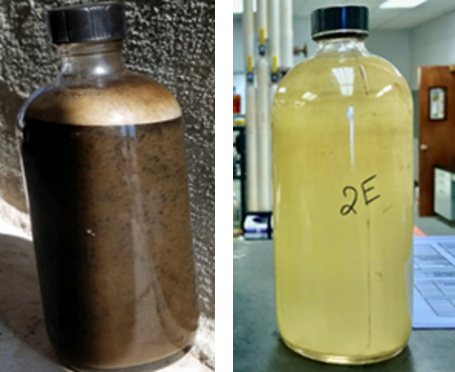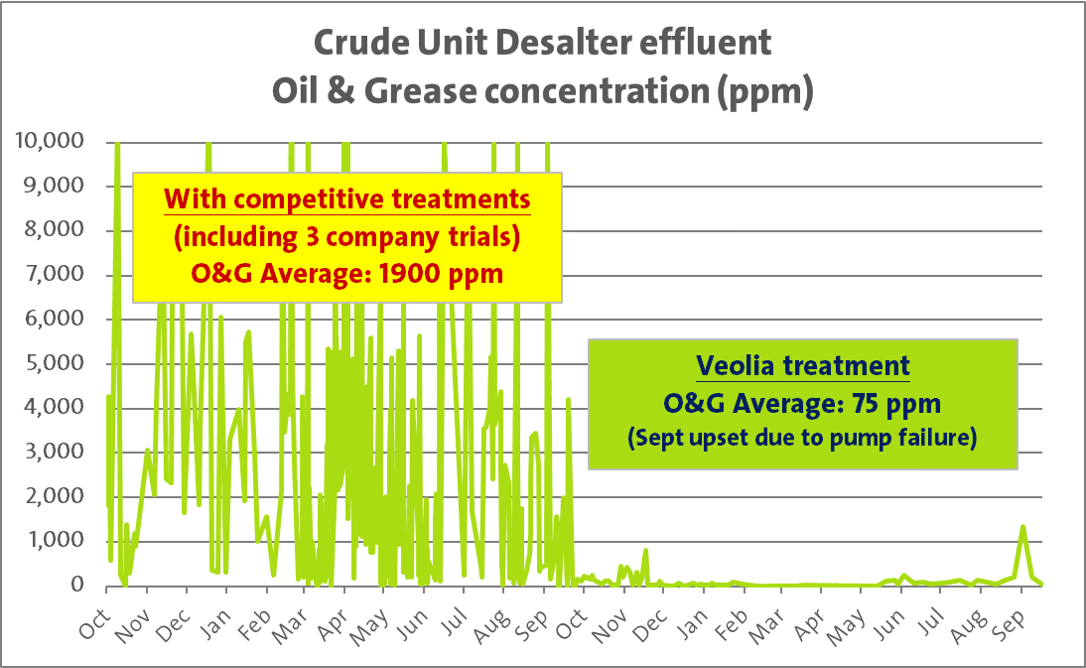
A Mid-Continent refinery, processing significant volumes of heavy Canadian bitumen-based crude, was seeing detrimental performance impacts to its desalter and waste water treatment operations. Processing this opportunity crude created instability in the rag layer control and high oil & grease (O&G) in the desalter effluent brine (see Figure 1).
The O&G content in the brine presented significant challenges for the wastewater treatment facility. To prevent exceeding the plant’s discharge limit and potential fines for violations, the opportunity crude rates had to be reduced along with crude throughput curtailment.
A solution was required which would allow for improved blending flexibility of these heavy opportunity crudes without causing desalter upsets and excessive O&G in the brine. Three trials by various competitive process treatment companies had previously failed to improve the situation.
To design a chemical treatment program that would maximize opportunity crude processing while generating oil-free effluent brine from the desalter, Veolia conducted field simulations and lab work with multiple desalter samples over several months.
This in-depth qualification protocol helped build a robust treatment program that accounted for variations in crudes, crude blends and process parameters.
Veolia was confident that the innovative and newly patented treatment solution proposed, BrineCLEAN, would solve the challenge under all modes of operations. This included desalter continuous mud-washing, which was of critical importance to maintain desalter cleanliness.

Figure 1 – Brine effluent without treatment (left) and with Veolia treatment (right)
Result
Within the first few hours of initiating BrineCLEAN, Veolia’s patented desalter brine quality assurance program, the rag layer in the desalter was reduced by ~30%. At the same time, the desalter’s effluent brine O&G content was reduced by over 95% (see Figure 2).
For the two years prior to implementing BrineCLEAN, the O&G in the effluent brine averaged 1,900 ppm and included three trials by competing process companies that had failed to produce results.
The first year of operation using BrineCLEAN resulted in an average O&G level in the effluent brine of 75 ppm: a decrease of 96%.
The refinery was able to process higher rates of heavy opportunity crude which they estimated improved their profits over $1.5MM/year.
Moreover, the Veolia BrineCLEAN program provided several other significant process benefits, including:
- Stable desalter operation with a lower operating cost:
- Increased salt & solids removal with greater oil/water mixing with reduced chemical consumption.
- Cleaner desalter due to continuous mud-wash at design flow rates
- Enhanced wastewater treatment plant stability with higher reliability in meeting discharge specifications while lowering operating costs.
- Reduced fouling in the crude preheat exchanger train which reduced energy and maintenance costs
- Increased asset reliability with lower crude tower overhead chlorides and reduced overhead chemical treatment cost.
- Reduced slop oil recovery and reprocessing costs.

Figure 2 – Desalter brine effluent oil & grease before and after Veolia`s patented treatment
